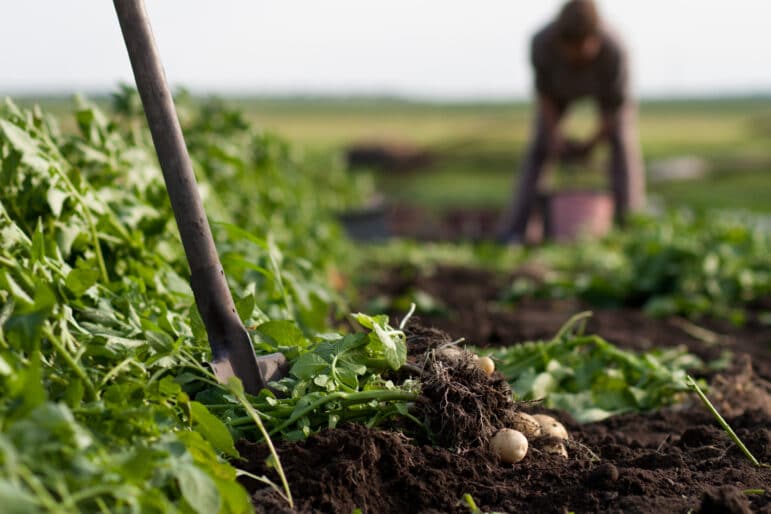
Nurturing Food Systems: Understanding Agroecology and AI-Driven Farming
As we navigate the complex landscape of our food systems, we must balance food security and environmental preservation. Conventional farming has made our food systems into what they are today. It relies upon genetically modified organisms (GMO) seeds that are, by design, predisposed to the chemical cocktails of herbicides, pesticides and fertilizers sprayed on them. The combination of these seeds and these chemicals – both of which are manufactured by the same, small group of businesses – has filled grocery shelves around the world with foods once foreign and unimaginable, and has helped stem hunger and malnutrition globally.
But conventional farming also has led to the steady erasure of local foods and food diversity, and with it the culture or traditions built around those foods. They have been replaced by grains,fruits and vegetables that are easier to mass produce and ship, and processed and ultra-processed foods that store well, are chemically engineered to taste great, and bring the consumer into the embrace of globalization. The mass production of foods, which relies on monocropping and massive amounts of pesticides and herbicides, has led to soil depletion, poisoned water sources and biodiversity loss.
According to manufacturers and technology advocates, artificial intelligence can lead to what is being called precision farming, which is meant to make conventional farming practices more precise, less resource heavy, and thus less wasteful. AI-driven farming leverages data analytics, machine learning and remote sensing to optimize agricultural practices. AI can predict crop disease outbreaks by analyzing weather patterns, soil conditions and plant health. This preemptive approach minimizes crop losses, contributing to food security.
Kilter, an AIfarming startup, uses AI to enhance machine learning for pest and weed control; the technological precision – thus precision farming – reduces the amount of pesticides needed while also reducing the number of hours farmers need to spend in their fields. The anecdotal success from companies like Kilter or Carbon Robotics, another AI farming company that utilizes lasers rather than pesticides to kill weeds, exemplify the benefits of precision agriculture, enabling farmers to tailor irrigation, fertilization and pest management to specific field areas. According to research, precision agriculture maximizes resource efficiency but also minimizes the environmental footprint associated with conventional farming.
Agroecology embodies the idea of cultivating harmony with nature through principles such as diversity, recycling and local adaptation.
Then there’s agroecology, which farmers and smallholders and advocates hail as the much needed antidote to conventional farming, that can at once provide the food we need while working within the constraints of whatever ecosystem they’re being grown in. Agroecology embodies the idea of cultivating harmony with nature through principles such as diversity, recycling and local adaptation. By promoting polycultures, encouraging crop rotation and integrating livestock, agroecology nurtures resilient ecosystems while ensuring soil health and biodiversity.
Agroecology has been shown to enhance pest control by cultivating natural predators and reducing reliance on chemical pesticides. Moreover, the adoption of agroforestry systems in Brazil demonstrated their potential to mitigate climate change impacts by sequestering carbon in soils and trees. It’s a holistic approach that seeks to balance what both human and nature need to flourish.
Defenders of conventional agriculture and the introduction of AI farming systems (perhaps rightly) argue that without industrialized agriculture that produces massive amounts of food, we cannot feed the 8-10 billion people that will occupy our planet in the coming decades. Alternatively, agroecological advocates – or really anyone who doesn’t like conventional farming – are quick to respond that any continued overreliance on conventional agriculture will exhaust soils to the point of no return. Studies suggest that without serious intervention, there may only be 60 growing seasons left.
So where is the middle way? Is there a middle way? It would seem that the future of our food systems will need to find ways for both, or better said, a variety of ways of agriculture to occur and coexist. The challenge as it stands is money. There is a lot of money in conventional farming: in the seed and chemical production and sales, in the production and shipping and processing of the food, in the predicatedable aspects of the foods that can be made and consumed. For decades it has been a steady and reliable system, but steady and reliable are words that don’t apply to life in the Anthropocene. We are pressing against the limits of how far conventional farming – even AI-assisted precision farming – can go.
We must invest in agroecological methodologies so that our soils and surrounding ecosystems can be revived and nurtured to ensure longevity in our growing cycles. We must reintroduce local, bioregional appropriate foods into our diets. Local restaurants and chefs can be key allies in this reintroduction process, by helping consumers appreciate local and seasonal foods. The same can be said for urban growing campaigns and local farms looking to supply their local regions. Markets will need to adjust, and grocery stores will need to make room on their shelves (and budget lines) for different kinds of food.
Or that’s the hope, at least. We want to get ahead of any kind of crisis from food shortages due to crop failures in distant lands. By supplementing global food supplies with locally grown produce, communities can build resilience for turbulent times now, and those yet to come. There’s no single way that we are going to solve our food crisis, but if we keep looking for a single solution from conventional farming, which is the current strategy being deployed by the majority of countries, then we’re going to be in trouble.
